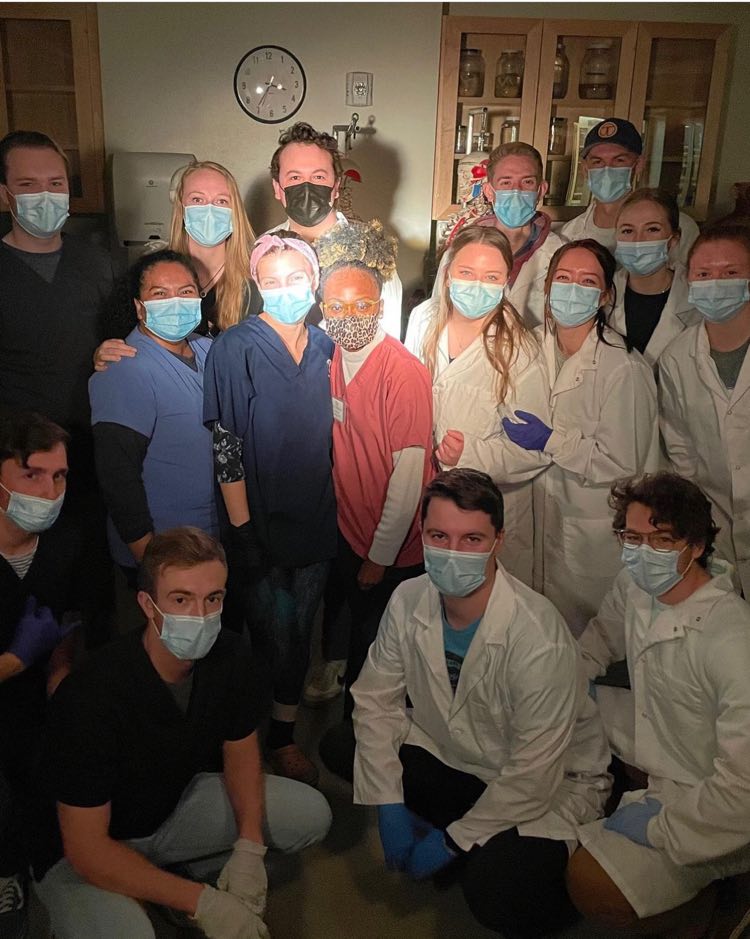When BYU public health student Kiese Mpongo looks in the mirror, she sees herself as a future doctor, building bridges and fixing the racial gaps found in modern medicine.
She said she sees herself as an advocate for women of color across the world. She hopes to uncover new medical discoveries and debunk myths while leading to new solutions for Black women in maternity or dermatology.
“When I look in the mirror, I think of all the Black women that have come before me like my mom, my grandmother, aunts and siblings,” Mpongo said. “They have really helped me to keep pressing forward.”
Leslie Hadfield, a BYU African history professor, noted how important it is to celebrate Black history and recognize the accomplishments of Black historical figures. She said this is especially prudent for Black children so they can see others who look like them and have achieved significant accomplishments.
“When you see someone like yourself or you see someone you can identify with in history, that gives you a sense of belonging,” Hadfield said. “It gives you a sense of your potential as a person.”
Mpongo is the youngest daughter of immigrant parents from the Congo. While she and her siblings grew up, they were well-acquainted with stories from their parents of the sacrifices and determination that led them to America and the blessings they have now.
“For us, Black history was always understanding what our parents went through and the things they endured and had to overcome,” Mpongo’s sister Matondo Probst said. “It definitely motivated us to work hard.”

Hard work and motivation are what Mpongo credits for her drive to receive a higher education and pursue a career in medicine. Besides her parents and other family members, Mpongo said she admires many Black women in history whose accomplishments often go unnoticed.
“There are a lot of hidden histories,” Hadfield said. “I think about the movie ‘Hidden Figures’ about the women who worked for NASA and how important they were and yet we hardly knew about them.”
Mpongo said she enjoys learning about and studying Black women who have made significant medical advancements because they inspire her to keep pressing forward as she works toward her goals in medicine.
“I was able to learn more about Dr. Rebecca Lee Crumpler. She was the first Black woman physician in the U.S.,” Mpongo said. “Her story has been really inspiring to me because I don’t really see a lot of Black doctors, let alone a lot of Black women that are doctors.”
As important as it is to recognize Black historical figures such as Martin Luther King Jr. or Malcolm X who made great advancements for civil rights, Mpongo said she believes it is just as important, if not more, to recognize Black historical figures who have shaped this country but often are forgotten.
Mpongo recognizes Black History Month as a time to research and find new historical figures to look up to who she can relate to both through race and interests. She mentioned Henrietta Lacks, whose immortal cells have been used to open the doors to different cancer research, and Sandra Lindsay, a Black woman who was the first person in the U.S. to get the COVID-19 vaccine.
As Mpongo looks to the past to find role models, she said she feels inspired to move toward the future to continue their legacies. It’s important to her that Black women continue to make history, are recognized for it and can continue inspiring future generations of young Black children.
“I think it really makes all the difference to see that ‘Oh I can do this, it is possible and it’s okay if I am the only person that looks like me doing something,’” Mpongo said. “I want to be in history and inspire people that come after me that they can do the same.”
Probst, Mpongo’s older sister, has two children of her own. As Mpongo is hoping to work her way through medicine, Probst said she feels extremely proud of her sister and loves that her children have a special aunt they can look up to.
“This is their blood doing amazing things,” Probst said. “It will motivate them and show them that they can do anything they want to as long as they work hard.”
Mpongo has one year left at BYU and then she hopes to attend medical school, where she will either study dermatology or childbirth. She said she hopes to bring awareness to the lack of representation for people of color in dermatology or discover why Black women are three times more likely to die in childbirth than white women.




